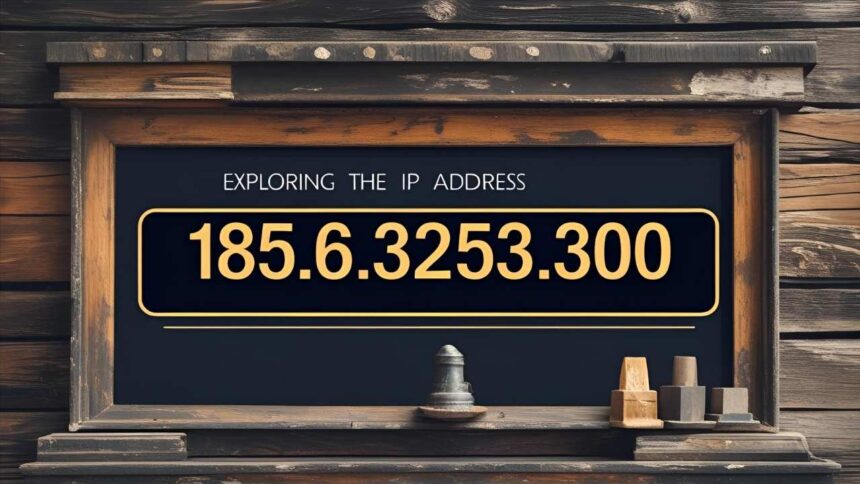The Role of IP Addresses in Networking
Every device connected to the internet or a private network is assigned an IP address, which stands for Internet Protocol address. These addresses are essential for routing data between computers, servers, and websites. However, not every IP address you see is valid, and that’s where the address 185.63.253.300 becomes a topic of interest.
This article will walk you through what makes an IP address valid, why 185.63.253.300 is not valid, and what it means when you come across such an address.
Understanding the IPv4 Addressing System
IP addresses come in two formats: IPv4 and IPv6. The address 185.63.253.300 follows the IPv4 format, which uses a set of four numerical blocks separated by dots.
Structure of an IPv4 Address
A standard IPv4 address looks like this:
X.X.X.X, where X is a number from 0 to 255.
Example of a valid IPv4: 192.168.1.1
IP Address Range Rules
Each of the four segments in an IPv4 address is called an octet. The value of each octet must be:
-
A number between 0 and 255
-
No letters or special characters
-
No segment greater than 255
Why 185.63.253.300 Is an Invalid IP Address
At first glance, 185.63.253.300 may appear to be a normal IP address. But there’s one major problem: the last segment is 300, which exceeds the IPv4 limit.
Maximum Values for IPv4 Octets
IPv4 octets are each 8 bits, which means:
-
The maximum decimal value = 255
-
300 is not a valid value in any octet
Breakdown of Each Segment in 185.63.253.300
-
185 ✅ (Valid)
-
63 ✅ (Valid)
-
253 ✅ (Valid)
-
300 ❌ (Invalid – exceeds max allowed number)
Common Reasons You Might Encounter Invalid IPs
Seeing an invalid IP like 185.63.253.300 might happen for several reasons:
Human Error and Typos
The most common reason is a typing mistake—someone may have intended to type 185.63.253.30 or 185.63.253.3, but added an extra digit.
Misconfigurations in Software or Systems
Sometimes, software systems incorrectly format IP addresses. This could happen during:
-
Server configurations
-
Network log generation
-
User input on a web interface
How to Identify and Correct Invalid IP Addresses
When dealing with invalid IP addresses, it’s important to catch the mistake early to avoid connectivity issues.
Using Validation Tools
You can use online tools like:
-
IP Address Validators
-
Regex-based validation scripts
-
Built-in features in firewalls and routers
These tools instantly check if an IP address follows the correct format.
Double-Checking IP Data Sources
Always verify:
-
Where the IP address came from (logs, emails, software, etc.)
-
If the data source might have corrupt entries or errors
What Happens When You Try to Use an Invalid IP Address?
Trying to connect to 185.63.253.300 can lead to:
Failed DNS Resolution
DNS (Domain Name System) servers will not recognize the IP, resulting in an error message.
Network Communication Errors
Your browser or device might return:
-
“Site can’t be reached”
-
“Invalid IP address”
-
Timeout errors
These are signs the IP doesn’t exist or can’t be used.
Valid IP Address Alternatives in the 185.63.253.x Range
The 185.63.253.x IP block appears valid (if 300 is replaced with a number between 0–255).
Examples:
-
185.63.253.1
-
185.63.253.254
You can run a WHOIS lookup or IP geolocation tool to see who owns these valid IPs.
Security Risks of Using Incorrect or Fake IP Addresses
Potential for Phishing and Spoofing
Attackers sometimes use “fake” IPs in scams to trick users. An invalid IP may:
-
Be used to fake server logs
-
Confuse security teams during investigations
Risks in Network Scanning and Logging
Improper IP logging (e.g., logging 185.63.253.300) can:
-
Break analytics tools
-
Cause faulty reporting
-
Lead to incorrect blacklisting or whitelisting
Tools to Analyze IP Addresses Properly
Use reliable IP tools such as:
-
WHOIS Lookup: To see who owns an IP
-
IPinfo.io: For geolocation and provider info
-
MXToolbox: To check DNS and IP health
IPv6 vs. IPv4: The Importance of Format Validation
Differences in Address Length
IPv4: Four blocks (e.g., 192.168.0.1)
IPv6: Eight groups of four hex digits (e.g., 2001:0db8:85a3:0000:0000:8a2e:0370:7334)
Format Rules Comparison
| Protocol | Segments | Range per segment | Valid Characters |
|---|---|---|---|
| IPv4 | 4 | 0-255 | Numbers only |
| IPv6 | 8 | Hexadecimal | Letters & Numbers |
Educational Use Cases: Teaching IP Address Standards
Invalid IP addresses like 185.63.253.300 are great for:
-
Teaching proper IP formatting
-
Demonstrating validation techniques
-
Training students in cybersecurity and networking protocols
Frequently Asked Questions
Q1. Why is 185.63.253.300 not a valid IP address?
Because 300 is greater than the allowed maximum of 255 in IPv4.
Q2. Can an IP address have a number above 255?
No. Every segment in IPv4 must be between 0 and 255.
Q3. What should I do if I see an invalid IP address in a log file?
Check for typos or misconfigured software. Use IP validation tools.
Q4. Can IP addresses be made up or faked?
Yes, attackers sometimes use fake IPs for phishing or spoofing.
Q5. How can I find out who owns a valid IP address?
Use a WHOIS lookup tool to identify the IP’s owner and location.
Q6. What tools help check IP address validity?
Try websites like IPVoid, MXToolbox, or browser extensions for instant checking.
Conclusion
The IP address 185.63.253.300 may seem real, but it breaks the rules of IPv4 formatting. Understanding how IP addresses work helps you avoid mistakes, detect errors, and protect networks from confusion or misuse.
Whether you’re an IT professional, a student, or just curious, it’s always worth learning how to spot a wrong IP address—because even one incorrect digit can block a connection, confuse a server, or open a door to trouble.





